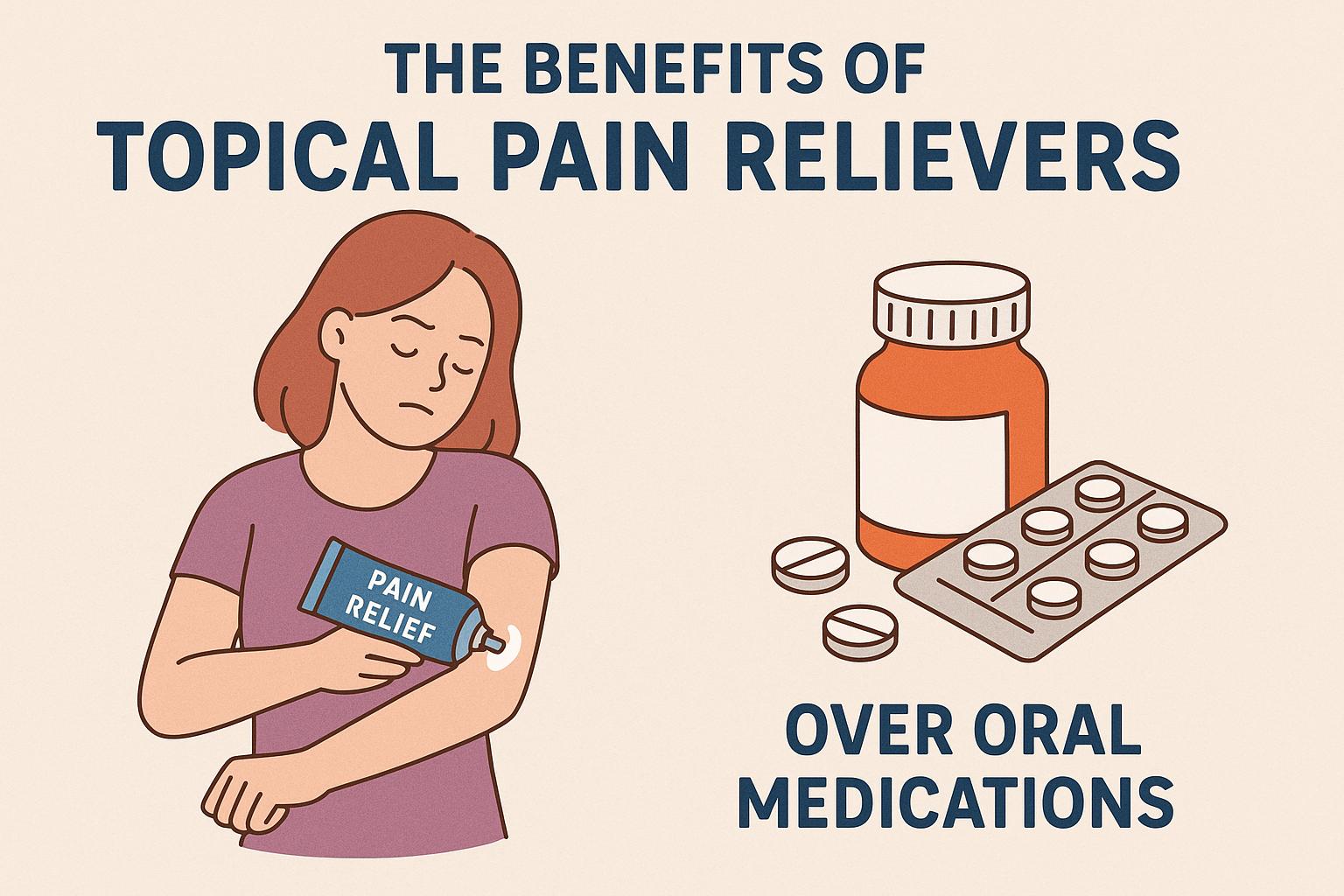
The benefits of topical pain relievers over oral medications.
Understanding Topical Pain Relievers
Topical pain relievers constitute a significant alternative to oral medications for managing pain. Their primary method of application is directly onto the skin’s surface, targeting the area experiencing discomfort. This contrasts with oral medications, which are typically ingested and undergo a transformation, traveling through the digestive system before entering the bloodstream. The direct delivery mechanism of topical pain relievers offers several distinct advantages over their oral counterparts, which will be explored in detail below.
Localized Relief
The primary advantage of topical pain relievers is the localized relief they provide. By delivering medication directly to the site of pain, these treatments can be especially beneficial for conditions such as arthritis, muscle strains, or minor injuries. These ailments often result in pain concentrated in specific areas of the body. By applying the medication to the skin, active ingredients penetrate the tissues, delivering relief where it’s most needed; they work on reducing inflammation and alleviating discomfort at the source of pain. This targeted approach ensures that relief is not only swift but also efficient, reducing the need for systemic intervention, which can be both time-consuming and taxing on the body.
Minimizing Systemic Effects
One of the most significant advantages of using topical pain relievers over oral medication is the reduced risk of systemic effects. Oral pain relievers must make their way through the digestive system before entering the bloodstream, affecting various body systems in the process. While this method has its merits, it can also result in unwanted side effects such as gastrointestinal issues or even cardiovascular concerns, depending on the medication. On the other hand, topical applications avoid these issues by not necessitating systemic circulation. This localized action provides a safer choice for individuals who may be predisposed to certain systemic side effects, making it a prudent option for many seeking effective pain management strategies.
Customized Dosage and Application
Topical treatments also allow for a more tailored approach to pain management. Unlike many oral medications that come in predetermined doses, topical treatments can be administered in varying amounts based on the severity of the pain and the individual’s specific needs. This flexibility empowers patients to manage their pain more effectively, giving them the autonomy to adjust dosages without the risk of overmedicating. This customization is particularly beneficial for managing episodic pain incidents, where the intensity of the discomfort may vary from one occurrence to another, and thus, requires a dynamic approach to treatment. Additionally, the application of topical treatments can be controlled more easily, further enhancing the ability to personalize pain management plans.
Lower Risk of Interaction with Other Medications
For individuals already taking multiple medications, introducing oral pain relievers often carries the risk of interactions with other drugs. These interactions can potentially lead to adverse effects or reduce the efficacy of prescribed treatments. Topical pain relievers generally pose a lower risk in this context because they are not absorbed into the system in the same systemic manner as oral medications. This property makes topical solutions a critical consideration for patients managing chronic conditions that require the continuous use of medication. As such, topical pain relievers can offer an additional layer of safety in the comprehensive management of an individual’s health regime, ensuring pain management can be conducted without compromising the safety or effectiveness of other ongoing treatments.
In summary, topical pain relievers present an effective and versatile approach to managing pain. By offering benefits such as localized relief and minimizing systemic side effects, they play a crucial role in improving comfort and quality of life for individuals experiencing pain. The customizable nature of their application and lower potential for drug interactions make them an appealing choice for patients and healthcare providers alike. Personalized pain management through topical treatments represents an evolution in how discomfort is addressed, highlighting the importance of considering these solutions within broader pain management strategies. Ultimately, by leveraging the unique advantages of topical pain relievers, individuals facing a variety of painful conditions can find relief that is both effective and safe, supporting their overall well-being and daily functioning.
